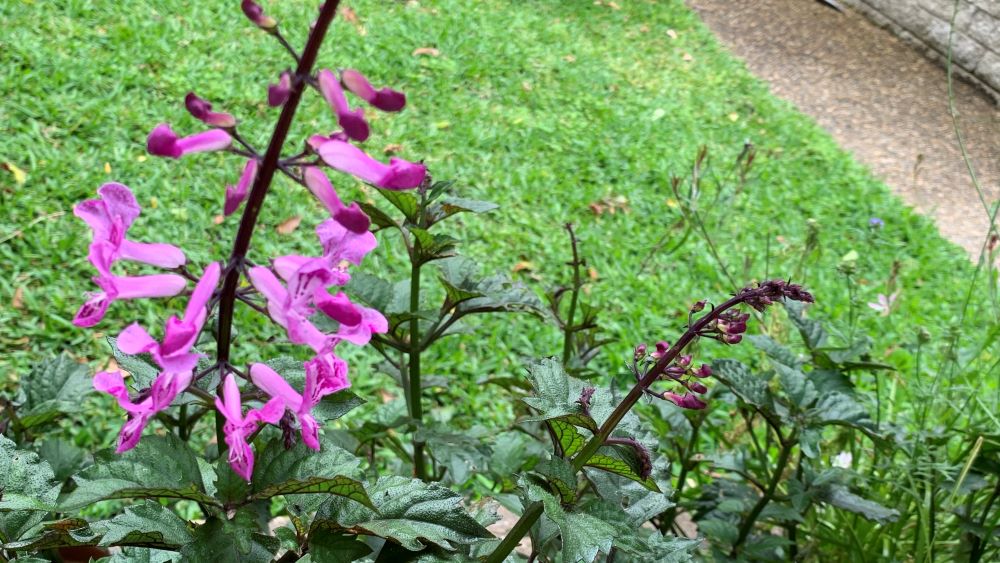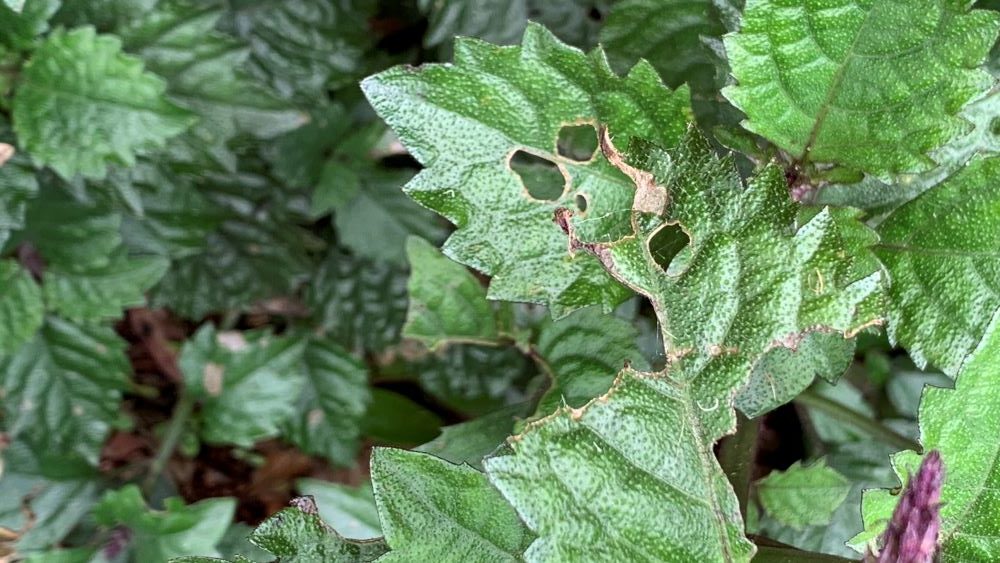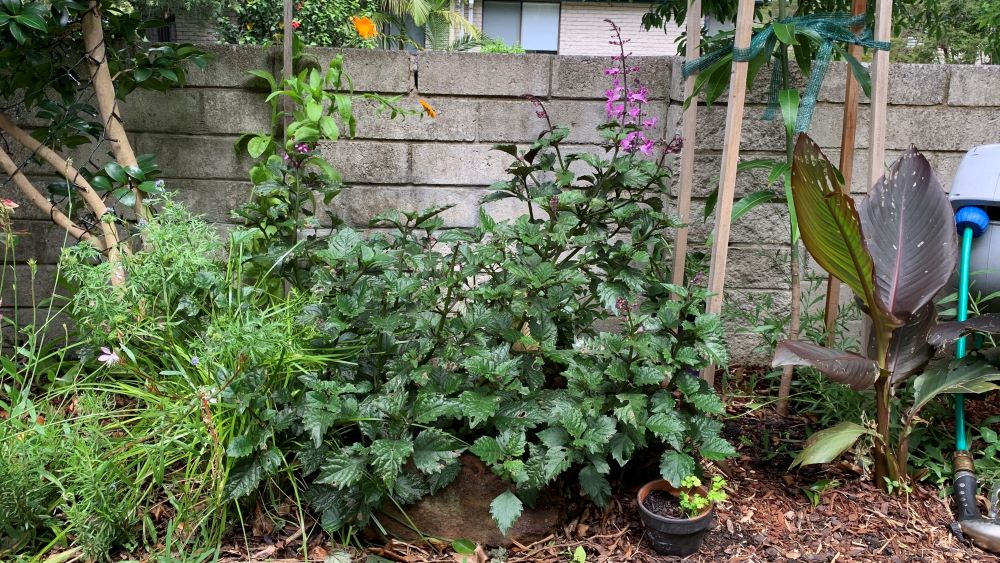Plectranthus leaves will turn brown if the plant it getting too much water, too much direct sunlight, if it is lacking nutrients or is attacked by pests. My plectranthus developed brown leaves after being attacked by caterpillars and getting too much water.

This article explores what I did to save my plectranthus and my 4 easy tips to grow a healthy plant.
Top causes of brown leaves on plectranthus
Here are the top 5 causes of brown leaves on plectranthus and what you can do to solve each problem.
1. Too much water
The top cause of brown leaves on plectranthus is too much water. Plectranthus are drought hardy plants and when they are grown in areas with high rainfall or if you give them too much water they can turn brown.
The roots are sensitive to too much water and this excess water can damage the roots, stems and leaves. Brown and black spots are common symptoms of too much water.

Solution
The easy solution to this problem is to reduce your watering schedule to once every 2-3 weeks in spring and fall and once every 4 weeks during a wet winter. While watering each week in summer might be necessary you should always check the soil first to see if it is moist.
You only need to water the plant if the soil is dry 2 inches down. Water the plant deeply and let it dry out between watering.
2. Too much sun
Plectranthus can develop brown spots on its leaves if it is getting too much sun. These plants love part to full shade and too much hot direct sun can cause the leaves to burn. You will may notice patches of brown on the leaves after a hot day.

Solution
To keep your plectranthus protected move any potted plants into a position that gets afternoon shade. You could also move the plant next to other shrubs or fruit trees like lemon or lime to provide shade.
3. Not enough nutrients
A lack of nutrients can cause brown leaf spots on your plectranthus. A lack of nitrogen can be a problem that causes leaf damage but there are a range of nutrients that might be lacking from your soil.

Solution
The easy way to solve this problem is to give the plant a fertilizer that contains a broad range of nutrients. I like to use a general fertilizer on all of my plants like pelleted chicken manure or an organic slow release granule. I can fertilize all of my plants using this in spring and fall and it will help to solve the leaf problems.
4. Poor draining soil
Planting plectranthus in soil that lacks nutrients or does not drain well can cause brown leaf spots. Clay soil will hold too much water for plectranthus and can cause root rot and brown leaves.

Solution
The easy way to solve this problem is to mix through a large amount of organic material through the soil before planting. Choose an aged manure like cow or chicken and mix it through the soil with compost. This will help to feed the plant and let the excess water drain out well.
5. Pest attack
Caterpillars or aphids can attack plectranthus leaves causing holes and brown marks on the leaves. Caterpillars will bite into the leaf and eat holes through the leaves. You may even find that snails or slugs take a liking to your plectranthus and you can see nibbles on the edges of the leaves.

Solution
If the damage is minimal you can just flick the caterpillars off your plant into warm, soapy water. Sap sucking insects such as aphids and thrips can be treated with neem oil or washed off with a quick blast of water.
How to keep plectranthus leaves healthy
Here are my top tips to keep plectranthus leaves healthy.
1. Slow down your watering
If you suspect that overwatering is the problem reduce the amount you are adding to your plant. I was using my plectranthus as the first place to point my hose when I turned it on to water my garden. Watering the plant every 2 days was too much and it developed black and brown leaves.
I now water my plectranthus every 2-3 weeks in spring and I will increase this to every week in Summer. We are getting a lot of rain and it really doesn’t need any extra from me.
2. Move the plant into shade
For potted plectranthus or those newly planted it might be a good idea to move it into shade. Move the pot where it gets afternoon shade or is surrounded by other shrubs. If the plectranthus is growing in the ground you can surround it with taller plants like clivia to create some shade.

3. Give it all-purpose organic fertilizer in spring
Giving your plectranthus fertilizer in spring and fall will help to keep it happy. A handful of all purpose fertilizer or pelleted chicken manure will help to feed it with the nutrients it needs for the whole year.
4. Mulch the plant with bark
It is important to mulch your plectranthus with bark to help to absorb extra water. I like a 2 inch layer of bark mulch as it will absorb the excess rain and slowly release it out to the plant. Mulch will help to avoid any soil washing away and feed the soil bacteria and worms improving the soil over time.
Plectranthus leaves turning brown | Summary
Plectranthus leaves can turn brown if the plant gets too much water, too much sun or is attacked by sap sucking or chewing pests. Make sure it is planted in good quality potting soil or in improved soil with compost mixed through. Only water your plectranthus when it needs it and it will be happy.
Plectranthus are hardy plants with lots of bright, purple flowers appearing as early as spring. They will flower all the way through summer and into fall if they are well cared for.
Happy growing.
I am an accredited practicing dietitian, experienced gardener and a dedicated cook. I love writing and sharing my experience so you can learn from my successes and mistakes.
